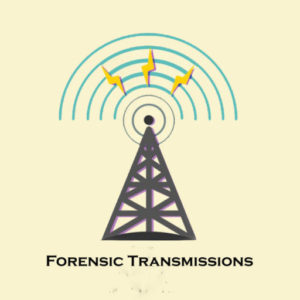 Forensic Transmissions is now archived.
Forensic Transmissions is now archived.
All episodes available here, and on iTunes, and Spotify.
“This strange and powerful transformation of the true crime format distributes unedited, public domain forensic audio.”
Best New Podcasts of 2017, The Audit
“We stumbled on this by accident and now feel compelled to tell everyone we meet about it, including you… Every episode features a piece of unedited, public domain, forensic audio – an interrogation or a trial or a 911 call. This is presented without introduction, narration, or comment… you’re on your own… These slivers of uncut actuality have a kind of mystical power – they are unsolvable puzzles, with an edge-of-life immediacy – and we couldn’t stop listening. New episodes drop randomly.” The Audit, issue #77
Forensic Transmissions is an audiophile’s curated collection of public domain audio files. It emerged out of my own search for a true crime podcast that contains only the most compelling live audio–911 calls, trial clips, forensic testimony, police interrogations, and victim testimony–but without narration, judgements, commentary, or product endorsements. In the end, I began my own collection.
“Forensic Transmissions” isn’t for everyone. But for those who share my audio obsessions, nothing on earth could be more riveting. The events unfold in real time, but the recordings are archival, which gives their urgency a paradoxical sense of loss. I’ve come to prefer live audio to visual coverage, which, in my view, leaves less to th imagination. Listen carefully to these audio recordings, and you’ll start to wonder what we’re doing here on this strange planet, moving mindlessly around the sun.
strange planet, moving mindlessly around the sun.
When it comes to “true crime,” what interests me is humanity. Not motive, method or modus operandi. Not legal argument, forensic science or police procedure. Not psychopaths or serial killers, but human emotions. And when the crime is murder, emotions are intense. Most murders are committed by someone in grip of a great passion: jealousy, greed, desire, lust for revenge.
A couple of things to note. This is minimalist podcast, with no host, no commentary, and no comments. The audio is unedited, which means everything is included (because everything speaks): pauses, sidebar conferences, throat-clearing, sniffing, pauses, paper-shuffling. The audio is not always clear. I’m only interested in dialogues where there’s tension between the questioner and the person being questioned–where personal experiences and memories are at stake–which means there is no testimony from law enforcement, forensic technicians, expert witnesses or circumstantial witnesses, nor is there any penalty phase testimony.
This audio is widely available in the public domain; most of it has posted elsewhere online. What the podcast offers is not original material, but curation: a careful selection of the most compelling interviews, phone calls, court testimony and police interrogations.
All episodes are categorized as explicit, although only a few include truly disturbing material. The podcast is available here, and on iTunes. Episodes are released at random intervals, usually three or four every month. “Forensic Transmissions” is independently produced, without sponsorship. If you enjoy the podcast, please give me a rating on iTunes. And if you’d like to find out about my true crime books, you can always visit my home page.
“Forensic Transmissions is absolutely terrifying, and it’s like no other true crime podcast. It’s a straightforward presentation of the facts, but the sum adds up to far more than the parts. These episodes feature no outside narration, no cogent summary, no musical interludes: they’re simply unedited, public domain audio of interviews, monologues, and soundbytes pertaining to criminal cases. Think of them as collections of evidence.
The art of Forensic Transmissions lies in the quiet curation of its public domain audio. In one episode, the chilling monologues of incel shooter Elliot Rodger in Santa Barbara are set next to police interviews with incel shooter Alek Minassian in Toronto. The terror is in what’s being presented, in its purest form. For most of the show, you have the voice of a mentally disturbed murderer in your ear. As a listener, you’re left to draw conclusions, make connections, and find your own semblance of closure.
If you have an interest in working in a forensic field, this might be the sort of thing you’re exposed to in the course of your job. Or, if you have a burning curiosity to listen to what investigators listened to, and less interest in hearing other people’s regurgitated commentary, then this is the show for you. Just be careful. It can’t be overstated how disturbing Forensic Transmissions can be, so listen at your own discretion, and wash your ears out afterwards.”
Top True Crime & Forensics Podcasts, 2020


